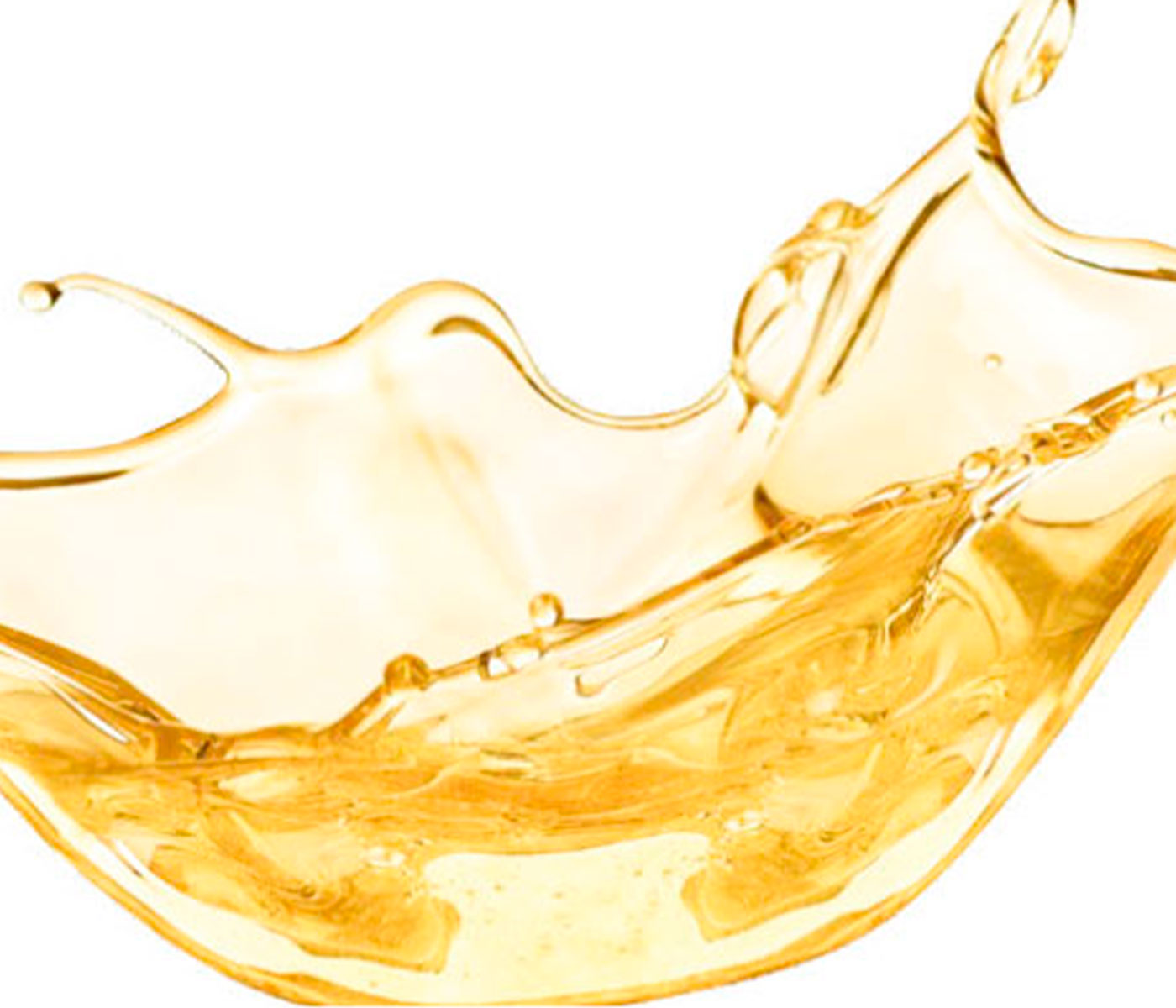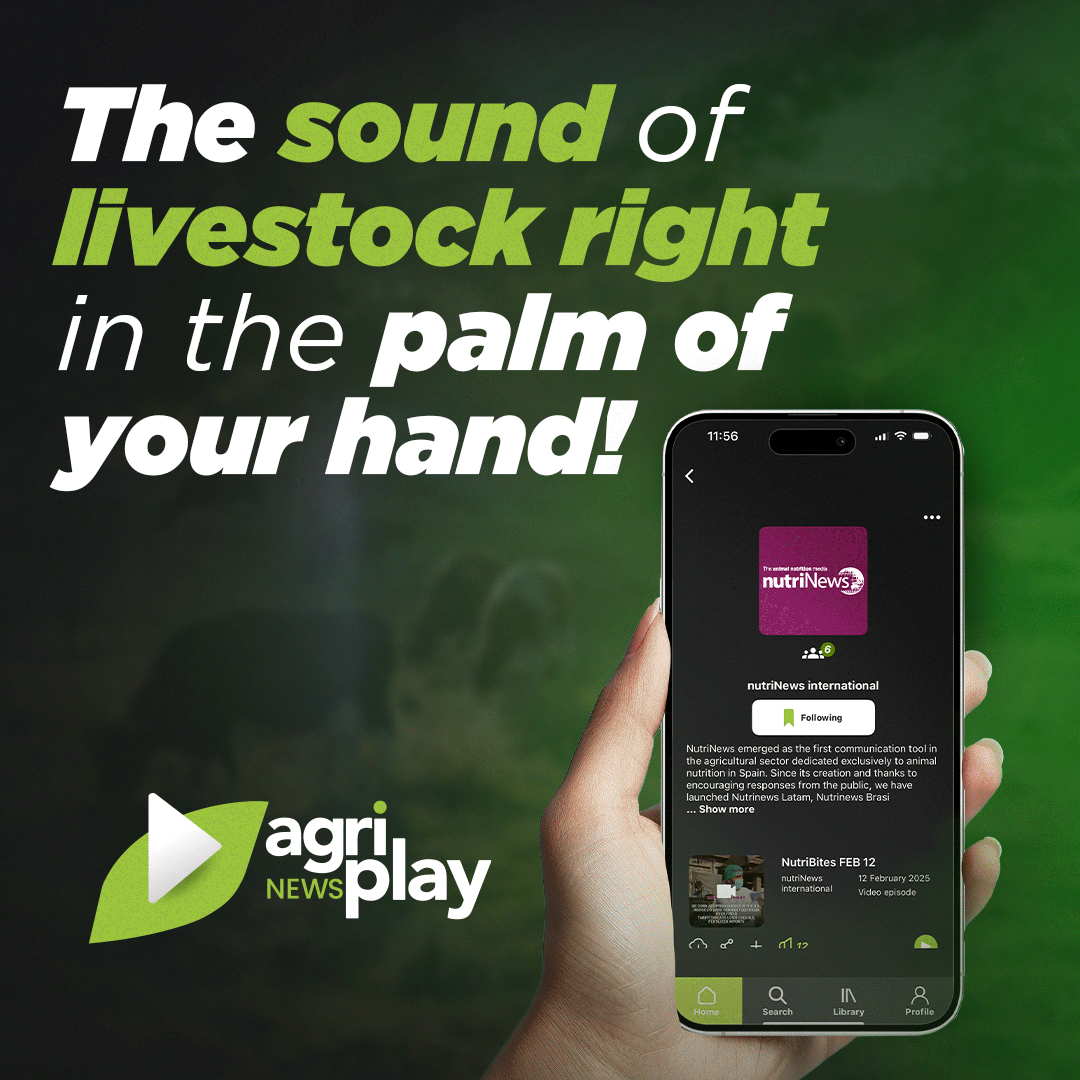Definition & classification
![]()
Fats and oils of vegetable origin as well as their by-products are considered raw materials that originate from various vegetable sources. These mainly include oilseeds such as soybeans, rapeseeds, sunflower or camelina. However, they may also derive from certain fruits like: olives, coconut or palm.
In addition to the original vegetable fats there is a group of industrial by-products derived from fats, including products such as:
![]() oleins, residues from the refining of edible fats
oleins, residues from the refining of edible fats
![]() lecithins, gums derived from the refining of industrial processes
lecithins, gums derived from the refining of industrial processes
![]() glycerol or other by-products that can also be used as energy sources in animal feed.
glycerol or other by-products that can also be used as energy sources in animal feed.
This type of fats tend to be found in liquid form(they possess a lower melting point than animal fats.) However, there are certain exceptions such as coconut or palm oil which have higher melting points,presenting a solid appearance at room temperature.
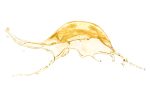
Vegetable oils used in food businesses (category 13.1.19 of the catalogue of raw materials; UCO) are currently banned in animal feed. Except for unheated oils, recovered during s production process (e.g. lecithin) or vegetable oils which have been used by food company operators in accordance with Regulation (EC) No 852/2004 for cooking. These must not have been in contact with meat, animal fats, fish or aquatic animals.
Vegetable fats, like any other type of fat, mainly provide energy in the form of lipids in feed.
Unlike animal fats, some of these are not produced in Europe or at least they are not from crops harvested within this region. Hence,the environmental impacts associated with of their use in animal feed can be very significant(as is the case with soybean oil and palm oil).
On the other hand, industrial by-products derived from these fats have lower environmental impacts due to their by-product status, and may also have a lower price.
The “Catalogue of raw materials” (Regulation (EU) 68/2013) classifies vegetable fat in section “2. Oilseeds, oilseeds and oil products thereof” and industrial by-products derived from fats such as acid oils resulting from chemical refining (oleins) or fatty acid distillates derived from physical refining in section “13. Other raw materials”
![]() It is mandatory to declare the moisture content when it is greater than 1% and the crude fat content in the case of acid oils.
It is mandatory to declare the moisture content when it is greater than 1% and the crude fat content in the case of acid oils.
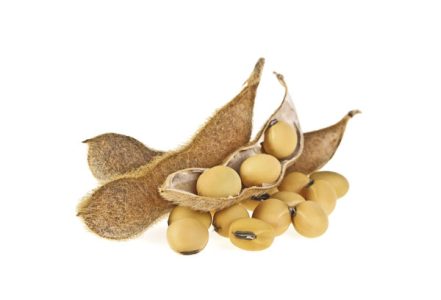
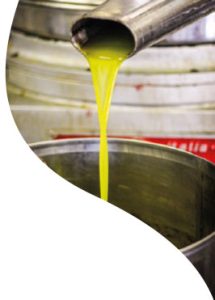 Procurement process
Procurement process
In general, fats of vegetable origin are obtained through mechanical pressing of the original raw material (seed or oleaginous fruit). It is also possible to obtain these oils from chemical processes involving the use of solvents or even through a combination of processes (mechanical and chemical).
In this case the oil extraction yield is higher, but the safety of the end product must be assured.
In the case of industrial by-products derived from vegetable fats, these are obtained from the refining of crude oils or fats.
![]()
The refining process consists of the removal of free fatty acids and other undesirable substances from oils either through chemical (olein) or physical (distillate) methods.
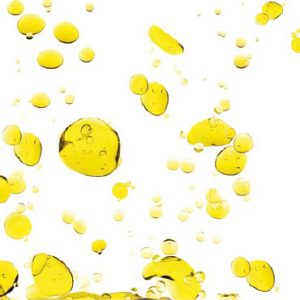
![]()
During the chemical refining process, triglycerides are separated from free fatty acids, which are responsible for acidity. This is done by adding NaOH (neutralization step).
This alkali precipitates the free fatty acids and converts them into soaps which are subsequently separated from the rest by centrifugation. These are acidified with sulfuric acid to obtain oleins (“acidulated soap stocks”; FEDIOL, 2020). Oleins are washed with plenty of water to drag the excess sulfuric acid, and dried though decantation. This process gives rise to commercial oleins.
In the case of physical refining methods, free fatty acids are removed through distillation by subjecting fats to high temperatures and vacuum (FEDIOL, 2020).Resulting in the product known as fatty acid distillate.
In this sense, both oleins and fatty acid distillates are products with a high content of free fatty acids (>35%). This confers them a high energy value, which is sometimes comparable to that of fat from origin.
In addition to fatty acids, these raw materials may contain other compounds such as essential fatty acids, tocopherols, polyphenols, sterols and other remains of fat-soluble vitamins, which are dragged by the processes of free fatty acid elimination
Chemical composition and nutritional value
From a chemical point of view, both oils and crude fats are triglycerides (esters of fatty acids and glycerin). Differing from one another according to the fatty acids that bind to glycerin.
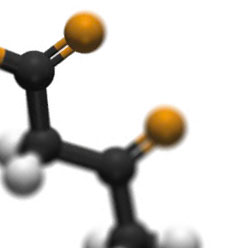 The length of the fatty acid chain or its degree of saturation is directly related to the nutritional quality of these ingredients (Wealleans et al., 2021). Thus, the shorter the fatty acid chain and the higher the percentage of unsaturation, the higher its energy value will be. This is especially true for monogastric animals.
The length of the fatty acid chain or its degree of saturation is directly related to the nutritional quality of these ingredients (Wealleans et al., 2021). Thus, the shorter the fatty acid chain and the higher the percentage of unsaturation, the higher its energy value will be. This is especially true for monogastric animals.

In ruminants, long-chain polyunsaturated fatty acids (> 20 C) are more toxic to rumen microorganisms than intermediate-chain fatty acids. Therefore, these can reduce the digestibility of other nutrients.
As mentioned in a previous entry on animal fats, the quality and nutritional value of the different sources of this type of fats depend on factors that affect their chemical quality and stability. Such as: their purity, amount of unsaponifiable lipids, presence of free fatty acids, amount of peroxides or the presence of toxic (dioxins).
At a global level, the MIU value is spoken of as a possible quality index that takes into account the humidity of the sample (M), the content of impurities (I) and the amount of unsaponifiable matter(U). Having an index of this type is useful for classifying raw materials such as industrial by-products derived from fats, which tend to have a higher content of impurities (Jiménez-Moya et al, 2021; Varona et al., 2021).
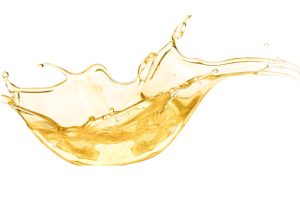
There are different tables published by FEDNA for soybean, rapeseed and palm oils and soybean oleins and palm distillates as well as those published by INRAE-CIRAD-AFZ. With the exception of the FEDNA tables, other usual food tables such as the INRAE tables or the CVB tables do not provide the composition of industrial by-products derived from fats.
In general, both oils and their by-products are considered to have a composition of approximately 100% fat, containing no moisture, protein, amino acids or minerals (or with minimal content of such nutrients).
The main fatty acids found in each source are different. With high levels of linoleic acid in soybean oil and oleins, high levels of oleic acid in rapeseed oil and a high level of palmitic acid in palm fatty acid distillates.

Factors affecting digestibility
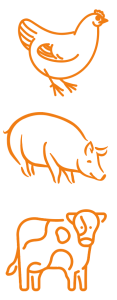
In addition to their quality and composition, in general, in addition to their quality and composition, the nutritional value of vegetable fats depends on the species, sex and age of the animal. These factors are capable of affecting the solubilization capacity and formation of micelles of these fats in the intestine and, with it, the digestibility of the different types of fat.
Broilers have a lower fat extraction capacity (AME) from these raw materials compared to pigs.
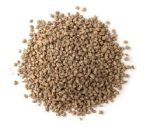
Despite this fact, industrial by-products of vegetable fats continue to be a good source of energy in feed (Rodriguez-Sanchez et al., 2019), although the analytical control and standardization of these products is of special importance for a correct re-evaluation (Varona et al., 2021).
Use in animal feed

The addition of sources of fat or oils in feed has the main function of increasing the energy density of these, since fats contain 2.25 times more calories than carbohydrates and proteins. In addition, fats improve the transformation rate, palatability and granulation quality (up to a maximum level).
This energy effect of fats makes more and more sense due to certain circumstances that are increasingly present in current feed, such as the high needs of animals at certain physiological stages (hyperprolific sows, dairy cattle, etc.) and the formulation with sustainability criteria. which often involves replacing starch with fiber and increases the need to incorporate fats.
In particular, with regard to the incorporation of vegetable fat sources in feed, it is necessary to take into account that, in general, its degree of unsaturation is higher than that of animal fats.
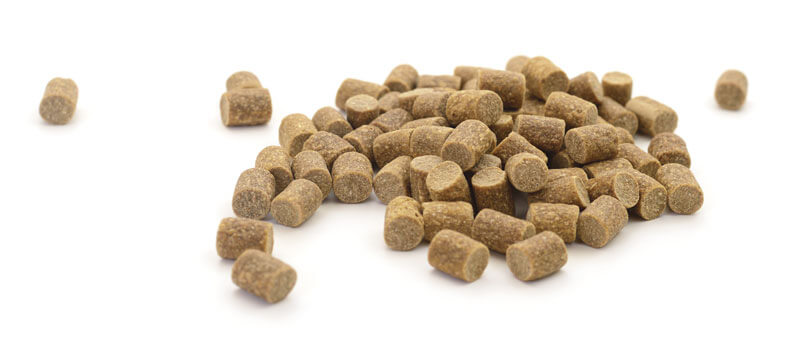
Although it is true that unsaturation improves the digestibility of fats, it is also true that it reduces the stability of the products and can lead to problems in the quality of the carcass if they are provided in high quantities at the end of the bait.
Saturated fats
Saturated fats, however, bring greater stability to the product, but have a less healthy connotation. However, it is known that the presence of unsaturated fatty acids in a feed with saturated fat can improve its absorption. In fact, the ratio of saturated to unsaturated fatty acids in a fat source is recognized as one of the most influential factors in lipid digestibility (Powles et al., 1995). In this sense, an unsaturated:saturated ratio < to 1.3 can lead to a reduction in fat digestibility, according to Powles et al. (1995).
Also, Khatun et al. (2017) demonstrated improvements in nutrient digestibility, animal growth, gut morphology, meat quality, and whey lipid profile with the use of a blend of polyunsaturated vs. saturated oils (4:2 ratio) in feed chicken bait.

As already mentioned, the energy level assigned to industrial by-products derived from monogastric fats is usually lower than that of originating vegetable fat sources.
However, recent studies on broilers indicate that the substitution of some crude palm oil in diets for soybean oleins (6% inclusion of soybean oleins; 2:4 ratio in the mixture) can improve the absorption of fat by animals during the fattening period (Jiménez-Moya et al., 2021).
![]() This without modifying the AMEcontent of the feed. In addition, other studies suggest that replacing soybean oil with soybean oleins does not modify the lipid profile of eggs (Pardío et al., 2005; Palomar et al., 2019).
This without modifying the AMEcontent of the feed. In addition, other studies suggest that replacing soybean oil with soybean oleins does not modify the lipid profile of eggs (Pardío et al., 2005; Palomar et al., 2019).
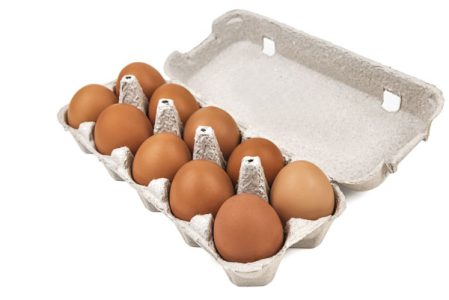
On the other hand, in ruminants it is well known that an excess of fat, especially unsaturated fatty acids, can have a negative impact on the growth of rumen bacteria (especially fibrolytic), thus influencing the digestibility of the ration.
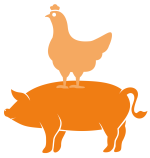
![]() Due to the high content of free fatty acids and the low pH of oleins, high levels can be potentially toxic to the rumen microbiota (Doreau and Chilliard, 1997) and enhance the acidogenic effect of concentrates.
Due to the high content of free fatty acids and the low pH of oleins, high levels can be potentially toxic to the rumen microbiota (Doreau and Chilliard, 1997) and enhance the acidogenic effect of concentrates.
However, some studies indicate that it is possible to include sunflower oleins (3%) in lamb rations (Blanco et al., 2013) without negative effects at low levels. On the other hand, most available calcium soaps are manufactured from fatty acids distilled from palm (Handojo, 2017), so indirectly these ingredients are already consumed by ruminants in the form of protected fat.
Conclusions
![]() In conclusion, vegetable fats are an excellent source of energy and essential nutrients, due to their composition (high content of polyunsaturated FA) and their purity.
In conclusion, vegetable fats are an excellent source of energy and essential nutrients, due to their composition (high content of polyunsaturated FA) and their purity.
![]() The most used in animal feed (soybean oil and palm) are not of local origin, so their use entails an added environmental cost.
The most used in animal feed (soybean oil and palm) are not of local origin, so their use entails an added environmental cost.
![]() On the other hand, the industrial by-products of these fats offer environmental and economic advantages and can be considered a promising source of energy, especially in poultry. However, to revalue these by-products properly, it is necessary to know their quality and fatty acid composition.
On the other hand, the industrial by-products of these fats offer environmental and economic advantages and can be considered a promising source of energy, especially in poultry. However, to revalue these by-products properly, it is necessary to know their quality and fatty acid composition.

